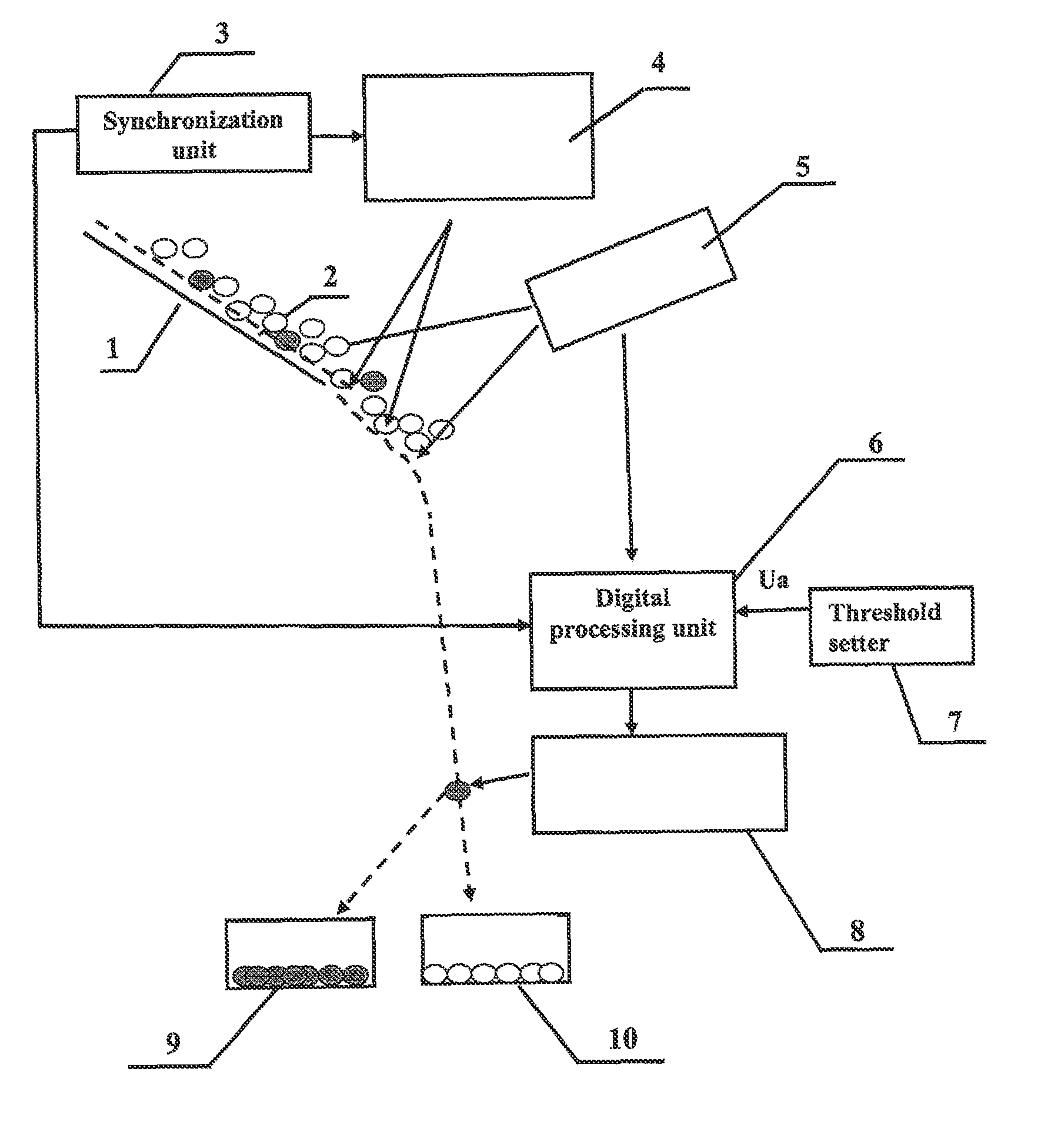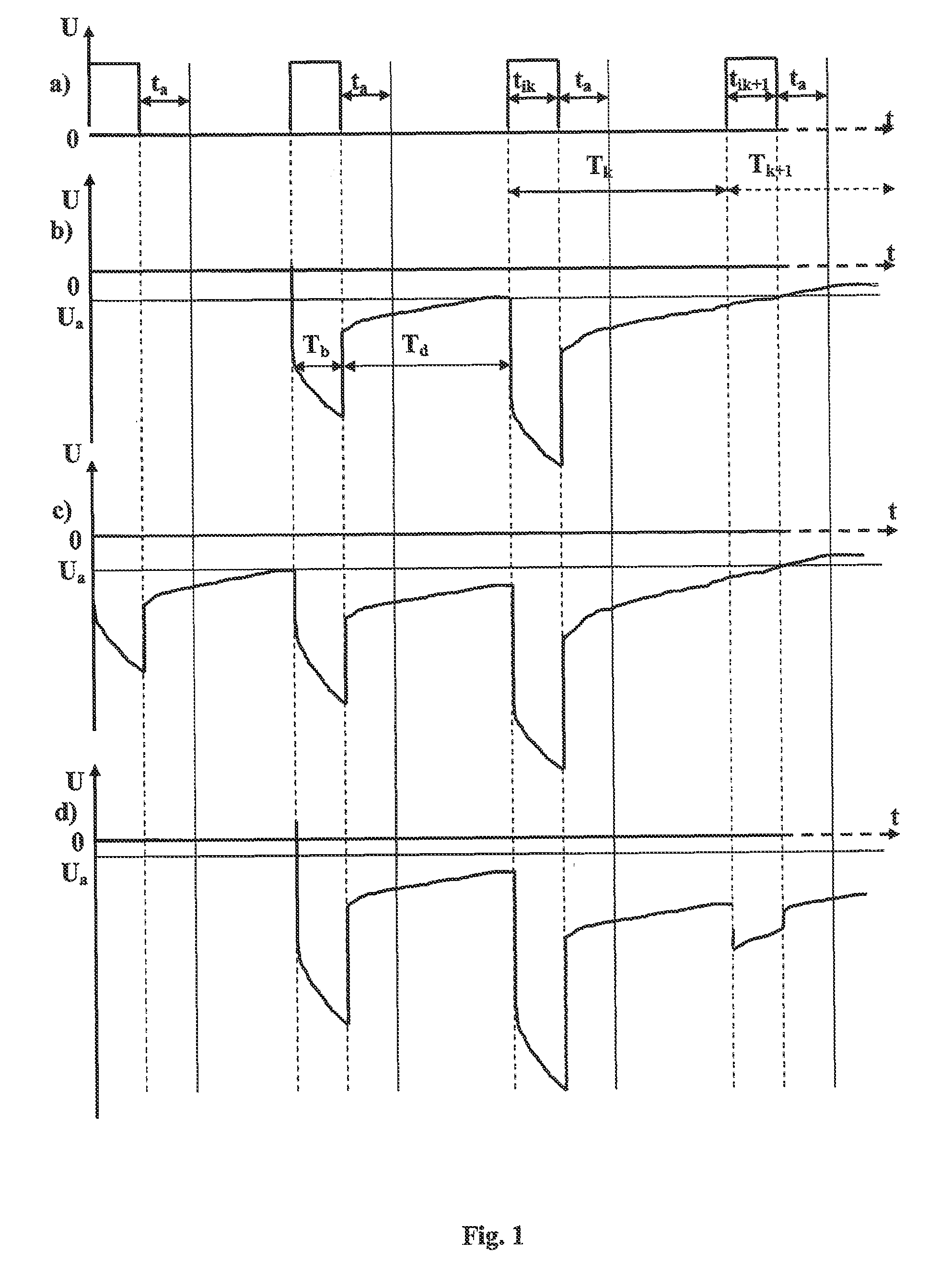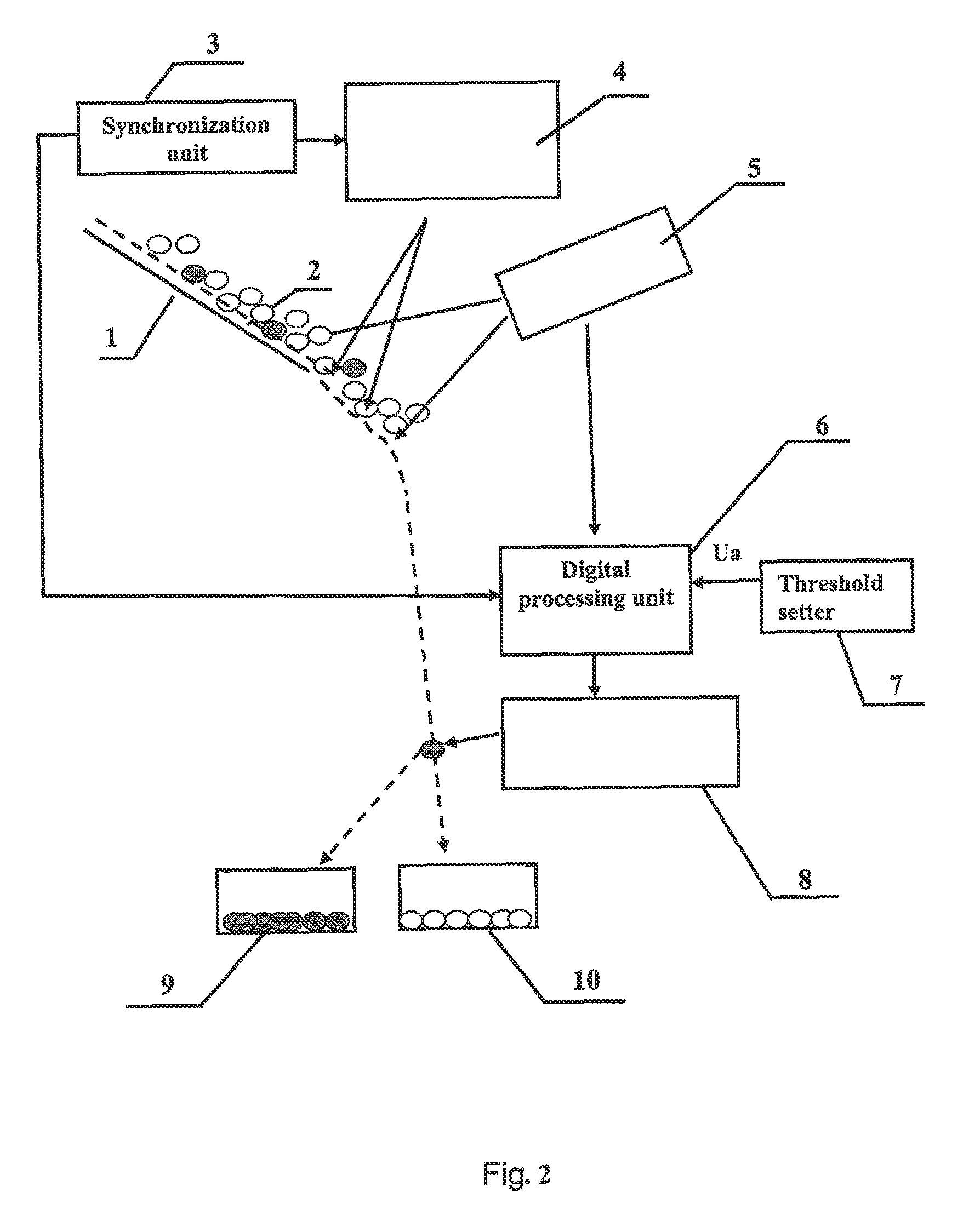Method for separating minerals with the aid of X-ray luminescence
a technology of x-ray luminescence and mineral separation, which is applied in the field of mineral dressing, can solve the problems of essential degradation of selectivity, limited use of this method, and limited amplitude range of recording instruments
- Summary
- Abstract
- Description
- Claims
- Application Information
AI Technical Summary
Benefits of technology
Problems solved by technology
Method used
Image
Examples
Embodiment Construction
[0038]In the proposed method for X-ray separation of fluorescent minerals, the concentration parameters are determined using that signal where the mineral fluorescence excitation reached its peak completeness, and, therefore, all inherent characteristic features of the fluorescence process for this mineral are most fully presented. This ensures that the concentration parameters that are then fixed will be accurate and improves the selectivity of the recovery of concentrating minerals. Indeed, since the length of the irradiation area is selected based on full fluorescence excitation of all the concentrating minerals, regardless of their inherent intensity, then in this particular area, the photodetector 5 records the signal U(max) with maximum intensity. The synchronization unit 3 provides link between period Tk of excitation pulse train tik and signal with recorded intensity U(tik)=U(max). This makes it possible to establish the duration of the concentrating matter separation operat...
PUM
 Login to view more
Login to view more Abstract
Description
Claims
Application Information
 Login to view more
Login to view more - R&D Engineer
- R&D Manager
- IP Professional
- Industry Leading Data Capabilities
- Powerful AI technology
- Patent DNA Extraction
Browse by: Latest US Patents, China's latest patents, Technical Efficacy Thesaurus, Application Domain, Technology Topic.
© 2024 PatSnap. All rights reserved.Legal|Privacy policy|Modern Slavery Act Transparency Statement|Sitemap



